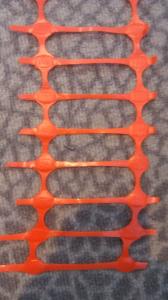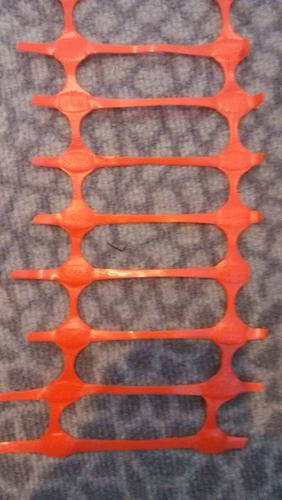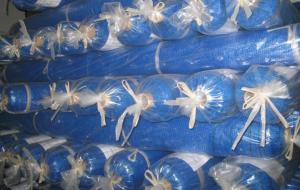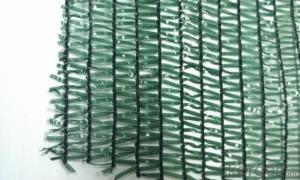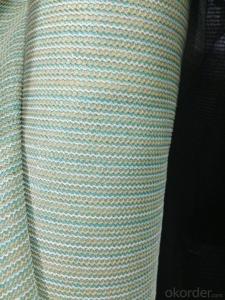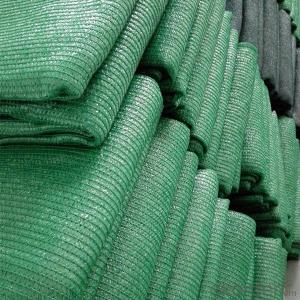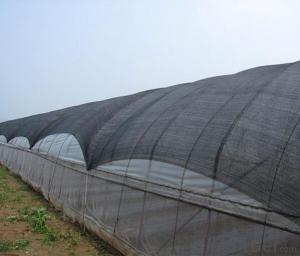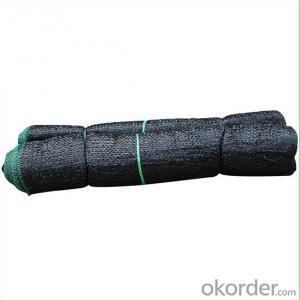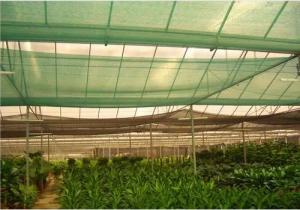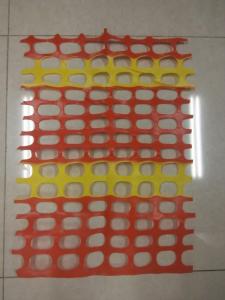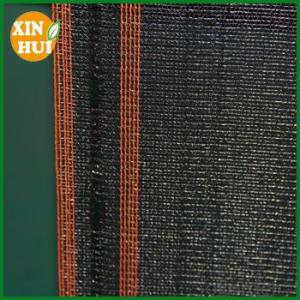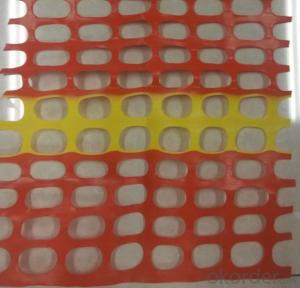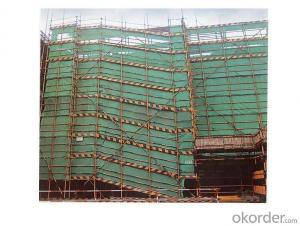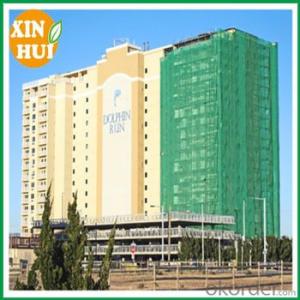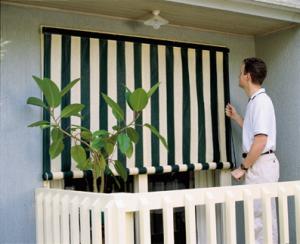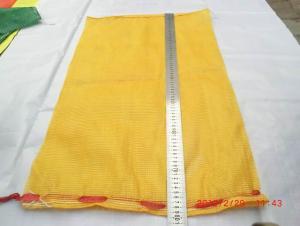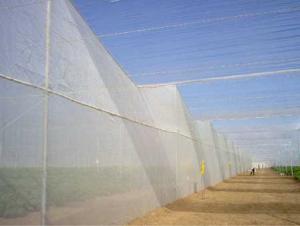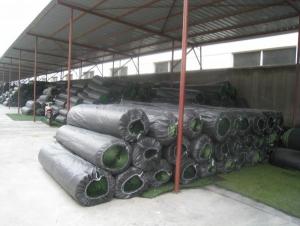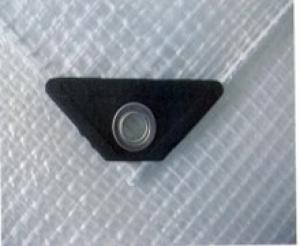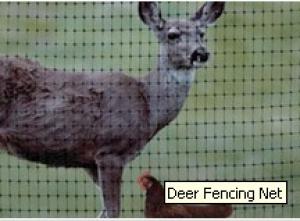Fencing Net Plastic Warning Fence for Construction
- Loading Port:
- China Main Port
- Payment Terms:
- TT OR LC
- Min Order Qty:
- -
- Supply Capability:
- -
OKorder Service Pledge
OKorder Financial Service
You Might Also Like
Warning Fence
Introduction:
Warning net is also named as warning barrier, safety fence and snow fence. It adopts PE as major raw material with UV added in manufactured through plasticizing. The main color is orange, designed for warning; it is featured with high strength, ageing resistance, anti-corrosion, softness and portability, and recycles.
Specifications:
Material base fabric | Fabric Weight | Uv. Content | Temperature range |
HDPE | 80gsm up to 200gsm Standard weight: 100gsm, 110gsm, 120gsm, 140gsm, 160gsm | 0.3% or 0.5% | -40 ~ +80oC |
Width: 1m, 1.8m,
Length: 50m, 100m
Color: Orange, Yellow, Green,
Applications:
- Temporary safety fence
- As a barrier to separate spectators from the participants in sports events
- High-way safety, construction safety, industrial filter, environmental protection, groundwork disposal
- Q: How are plastic nets used in waste management?
- Plastic nets are commonly used in waste management as a containment solution for various types of waste. They are often used to cover and secure landfill sites, preventing waste from scattering and reducing the risk of environmental contamination. Plastic nets can also be used to separate and sort different types of waste, aiding in recycling and ensuring proper disposal. Additionally, these nets are employed in waste collection systems to contain and transport bulky or lightweight waste materials, facilitating their efficient management and disposal.
- Q: How do plastic nets impact air quality?
- Plastic nets can have a negative impact on air quality as they contribute to plastic waste pollution. When plastic nets are discarded or not properly managed, they can break down into microplastics, which can then be carried by wind and released into the air. These microplastics can contribute to air pollution and potentially harm human health when inhaled. Additionally, plastic nets can also be a source of air pollution when they are burned, releasing toxic chemicals and greenhouse gases into the atmosphere. Therefore, it is important to reduce the use of plastic nets and ensure proper disposal to minimize their impact on air quality.
- Q: Can plastic nets be used for creating privacy screens?
- Yes, plastic nets can be used for creating privacy screens. They are lightweight, durable, and can provide an effective barrier for privacy purposes.
- Q: Can plastic nets be used for playground structures for child safety?
- Yes, plastic nets can be used for playground structures for child safety. These nets are often made from durable and non-toxic materials, designed to withstand the wear and tear of outdoor play while providing a safe and secure environment for children. Plastic nets are known for their strength, flexibility, and ability to absorb impacts, making them suitable for use in playground structures to prevent falls and ensure child safety.
- Q: Are plastic nets suitable for use in poultry enclosures?
- Plastic nets can be suitable for use in poultry enclosures depending on specific needs and considerations. They are lightweight, durable, and can effectively keep poultry contained within the enclosure. However, it is important to ensure that the plastic netting used is strong enough to withstand the pecking and scratching behavior of the birds. Additionally, proper installation and regular maintenance are necessary to prevent any potential hazards or escape routes. Overall, plastic nets can be a viable option for poultry enclosures, but it is crucial to evaluate their suitability based on the specific requirements of the poultry and the desired level of protection.
- Q: How do plastic nets affect marine ecosystems?
- Plastic nets have a significant negative impact on marine ecosystems. These nets, also known as ghost nets, are often discarded or lost by fishing vessels, and they continue to drift in the ocean, trapping and entangling various marine organisms. This leads to the death or injury of countless marine animals, including fish, turtles, dolphins, and even whales. Additionally, the entangled nets can cause damage to coral reefs and other underwater habitats, disrupting the delicate balance of these ecosystems. Overall, plastic nets pose a serious threat to marine life and contribute to the ongoing problem of marine pollution.
- Q: Can plastic nets be used for packaging kitchen appliances?
- Yes, plastic nets can be used for packaging kitchen appliances. They provide a protective and secure wrapping that can prevent scratches and damages during transportation and storage. Plastic nets also allow for ventilation and visibility of the packaged item, making them suitable for packaging various kitchen appliances.
- Q: How do plastic nets compare to rubber mesh materials?
- Plastic nets and rubber mesh materials have their own unique properties and advantages. Plastic nets are generally more lightweight, flexible, and cost-effective, making them suitable for various applications such as packaging, gardening, and sports equipment. On the other hand, rubber mesh materials offer superior durability, elasticity, and resistance to harsh weather conditions, making them ideal for heavy-duty uses like industrial and construction purposes. Ultimately, the choice between plastic nets and rubber mesh materials depends on the specific requirements and intended use of the product.
- Q: How do plastic nets provide support for fruit trees?
- Plastic nets provide support for fruit trees by acting as a physical barrier that holds the weight of the growing fruits, preventing branches from breaking or bending under the load. They also protect the fruits from pests and birds, reducing the risk of damage and loss.
- Q: How do plastic nets help in controlling insect infestations?
- Plastic nets help in controlling insect infestations by acting as a physical barrier that prevents insects from accessing plants or crops. The nets are designed with small enough openings to keep out insects while allowing sunlight, air, and water to reach the plants. This helps to protect the crops from insect damage, reducing the need for chemical pesticides and promoting healthier plant growth.
Send your message to us
Fencing Net Plastic Warning Fence for Construction
- Loading Port:
- China Main Port
- Payment Terms:
- TT OR LC
- Min Order Qty:
- -
- Supply Capability:
- -
OKorder Service Pledge
OKorder Financial Service
Similar products
Hot products
Hot Searches
Related keywords
